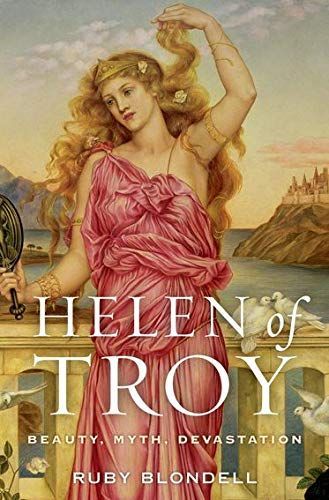
Helen of Troy Beauty, Myth, Devastation
Three millennia after the myth of Helen, our relationship to female beauty remains deeply ambivalent, fraught with both desire and danger. We worship and fear it, advertise it everywhere yet try desperately to control and contain it. In Helen of Troy Ruby Blondell investigates the origins of our persistent anxiety about female beauty, focusing on this key figure from ancient Greek culture in a way that both extends our understanding of that culture and provides a useful perspective on our own. Moving from Homer and Hesiod to Sappho, Aeschylus, Euripides, and others, Blondell offers a fresh examination of the paradoxes and ambiguities that Helen embodies. Other mythic women may be more violent but none wreaks more havoc than Helen. She is simultaneously the most desirable and most destructive. She causes the greatest war of all time when she elopes with the Trojan prince Paris, bringing her Greek husband, Menelaus, and thousands of Greek warriors in hot pursuit. Blondellshows that this is Helen's mythic essence: the beauty is inalienable, the destruction inevitable. For ancient Greeks, female beauty is an awe-inspiring, supremely desirable gift from the gods, essential to the perpetuation of a man's name through reproduction; yet it also grants women terrifying power over men, posing a threat inseparable from its allure. Three thousand years later, contemporary culture remains almost obsessively preoccupied with all the power and danger of female beauty and sexuality that Helen represents. Considering all aspects of the Helen myth - including the archaeological record, which contains evidence of her status as a cult figure, worshipped by maidens and newlyweds alike - Helen of Troy holds up a fascinating mirror to our own time.
Reviews
Imie Kent-Muller@mythicreader